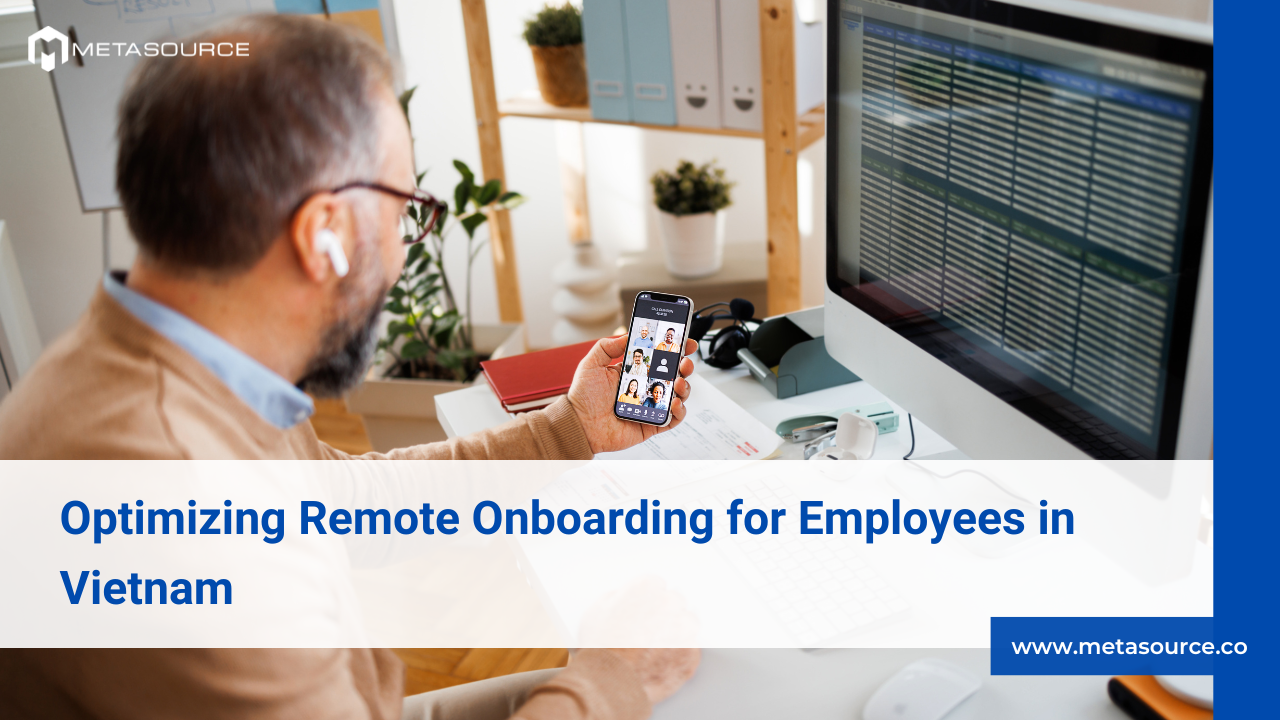In recent years, the landscape of work has dramatically shifted towards remote arrangements, with Vietnam experiencing significant growth in this trend. The ability to onboard employees remotely has become crucial for companies looking to tap into a broader talent pool while minimizing operational costs. For HR and line managers, crafting an effective remote onboarding process is vital to integrate new hires seamlessly, ensuring they feel connected and motivated from day one. This article explores the benefits and challenges of remote onboarding, offers practical strategies, and provides a checklist to streamline the process.
1. Understanding Remote Onboarding Benefits and Challenges in Vietnam
Remote employee onboarding benefits
Remote onboarding offers distinct benefits that are particularly advantageous for companies based in Vietnam. Two key benefits include:
- Access to Global Talent: By facilitating remote work, companies are not confined by geographic limitations. This opens up opportunities to recruit top-tier talent from across the globe, significantly enriching the team’s diversity and bringing in new perspectives that can drive innovation.
- Environmental and Cost Efficiency: Operating remotely allows businesses to save on overhead expenses associated with maintaining physical office spaces, such as rent and utilities. Additionally, it supports environmental sustainability by reducing the carbon footprint associated with daily commutes.
Remote onboarding challenges
While the benefits are substantial, the challenges of remote onboarding are equally significant, particularly in the context of Vietnam:
- Cultural Nuances: Vietnam’s distinct cultural elements can influence remote work dynamics. Understanding and integrating these nuances into the remote onboarding process is crucial to ensure clear communication and mutual respect among diverse team members.
- Building Connections: Without a physical office or casual meeting spots, it may take longer for new hires to feel connected with their colleagues. Establishing strong bonds in a virtual setting demands creative and frequent interaction strategies.
- Managing Time Zones: Coordinating schedules across different time zones can complicate the planning of introductory meetings and training sessions, requiring meticulous time management and flexibility.
- Technology Dependency: The reliance on digital tools and platforms can introduce potential vulnerabilities, such as connectivity issues or data security risks. Ensuring robust and secure technological support is fundamental to the success of remote onboarding.
- Adapting Onboarding Processes: Transitioning to remote environments necessitates reevaluating traditional onboarding strategies. HR and line managers need to develop tailored approaches that not only convey the organizational culture but also engage employees who may feel isolated from physical office settings.
2. Best Practices for Remote Onboarding
Communication Strategy:
Effective communication is the cornerstone of successful remote onboarding. Establishing clear, open channels for communication is crucial. Tools like Slack, Microsoft Teams, or Zoom can facilitate regular check-ins and face-to-face interactions, helping new hires feel connected to their colleagues and managers. Setting clear expectations about communication norms and response times is also important to prevent misunderstandings and ensure smooth collaboration.
Training and Resources:
Remote employees should have access to the same training and development resources as in-office staff. Digital onboarding materials, such as handbooks, policy documents, and training videos, should be easily accessible. Additionally, customizing training sessions to address the specific needs and roles of remote workers can help them understand their responsibilities and integrate more quickly into their new roles.
Integration into Company Culture:
Integrating remote employees into the company culture can be challenging but is essential for building a unified team. Organizing virtual social events, such as team lunches or coffee breaks via video call, can promote informal interactions and personal connections among team members. Sharing regular updates about the company, its goals, and achievements can also help remote employees feel part of the organization’s journey and success.
3. Remote Onboarding Checklist
Pre-Onboarding:
- Ensure all legal and administrative paperwork is completed, including contracts and work permits.
- Set up necessary technology and accounts, and provide guidelines on how to access and use company platforms.
First Week:
- Provide a detailed schedule of the first week, outlining who the new hire will meet, what training sessions they will attend, and what their first assignments will be.
- Assign a mentor or buddy from the team to help the new hire navigate their first few weeks and answer any questions they may have.
Ongoing Support:
- Schedule regular feedback sessions to discuss the new hire’s experiences, address any challenges, and adjust the onboarding process if needed.
- Develop engagement strategies to keep the remote employee connected to the team and motivated about their work, such as regular team challenges or recognition programs.
Adapting onboarding practices for remote employees is no longer optional but a necessity for businesses looking to thrive in today’s digital age, especially in a dynamic market like Vietnam. Continuous improvement based on feedback from new hires is essential to refine these processes. Effective remote onboarding not only enhances employee satisfaction and retention but also builds a resilient and inclusive workforce capable of driving long-term success. By implementing these strategies, HR and line managers can ensure that remote employees are well-integrated and highly engaged from the outset.
Metasource: Your Trusted Partner
Metasource is your trusted partner for consulting and supporting effective staff management across global teams, especially in culturally diverse environments like Vietnam.
Read more: Navigating the Complexities of Obtaining a Working Permit in Vietnam
Read more: How To Register A Limited Liability Company In Vietnam A Quick Guide
Discover more tips to help boost your business further in Vietnam by following us on our website and Linkedln page


